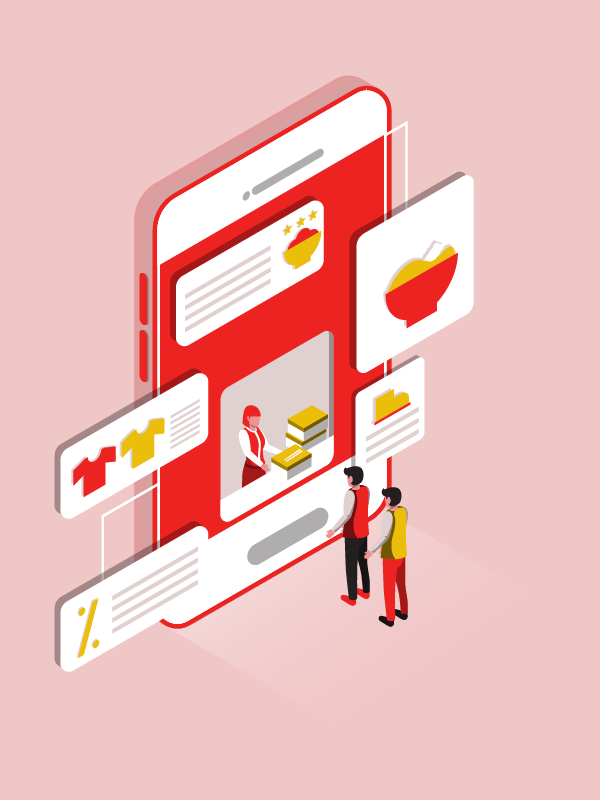Is your organization’s work done within walls of a physical space wherein your employees occupy their seats during regular office hours?
If yes, it’s high time you consider your staff’s changing work demands accurately and implement an entirely new working environment in your organization.
With the coming of a newer generation that is progressively adept in technological tools and that demands greater freedom in managing how, where, and when it works; the business world is becoming more global and digitized.
Thus, savvy organizations, around the world, are opening to newer and better strategic ways in order to promote workplace effectiveness.
Embracing a truly digital workplace is one of them.
But if you think access to work Emails on mobile devices, implementing social business or social enterprise, using voice over IP at work, or having enterprise resource planning are some things enough for building a digital workplace; rethink.
Read on to know what a truly digital workplace is, how it can benefit you, and how to build one in your organization.
What is a Digital Workplace?
Digital workplace is about an overall approach and philosophy of an organization for managing a free and flexible organization.
This technology-enabled ecosystem aims at transforming how people work, how business value is created, and how technology and management tools are used.
To make the concept clearer, let’s have a look at the definition of digital workplace.
Digital workplace lives at the intersection of people, organization, and technology:
Focuses on People
Digital workplaces put people first and provide an environment wherein they can work more efficiently and flexibly. This helps employers meet high technological demands of their employees.
Even Gartner focuses on a people-centric approach when it explains the concept: ‘Digital workplace is an ongoing, deliberate approach to delivering a more consumer-like computing environment that is better able to facilitate innovative and flexible working practices’.
Uses Technology Tools
In addition to HR and finance systems and intranets, digital workplaces make use of such collaboration and social platforms and communication technologies which allow anywhere, anytime working.
As per Capgemini Consulting, the increased use of new digital technologies such as tablets, smartphones, enterprise social networks or cloud services have already become mainstream in many business environments. Online training platforms like Skyprep Training Software, offer many intuitive features that will let you easily stay on top of what’s going on in your organization.
Benefits Organizations
According to the Information Age, businesses without a digital-workplace strategy will be at a competitive disadvantage.
Their stakeholders and employees will engage less and these businesses will not be able to meet the needs of modern customers.
Benefits of a Digital Workplace
Journey to a truly digital workplace has already started for many organizations across the globe.
The digital workplace doesn’t only provide real benefits for companies but also to employees, who can communicate, collaborate, and work more efficiently.
As per Gartner, ‘The digital workplace raises employee engagement and agility while exploiting consumer-oriented styles and technologies to enable new and more effective ways of working.
Responds to Critical Changes in Workforce
There is a wide gap between the business computing environment and the consumer computing environment. If organizations embrace partial or comprehensive consumer style of computing for business purposes, it will be beneficial and, in some cases, transformational.
A digital workplace helps organizations determine if and how rapidly they should embrace consumer-style computing trends.
Employees are ‘business consumers’. For them, business activities are one part of a wider lifestyle. Individuals do not stop being consumers when they go to work.
Business consumers often make more consumer-like choices in their workplace computing tools and styles to increase efficiency.
By providing a digital workplace to business consumers, an organization can ensure digital literacy of business consumers is harnessed and productivity is enhanced by introducing technology and engagement styles.
Appeal to employee’s working style ensures increased job satisfaction, thereby ensuring reduced absenteeism, increased retention rates of staff, more innovation of ideas, improved productivity, and better work/ life balance for employees.
For example, Alaska Airlines equipped all its pilots with iPad tablets that contain all flight manuals and flight information. The iPad enables pilots to find a full repository of information easier and faster in one location while also providing instant updates to the manuals before and after a flight.
Airlines giant estimates that it saves up to 2.4 million pieces of paper and flight weight of 25lbs per trip. Prime benefit is pilots record a better retention rate and work satisfaction. Source: PC World
Increases Workflow Efficiency
One of the ways to enhance mobility in a digital workplace is the Bring Your Own Device (BYOD) model. This model enhances workflow efficiency, in that tablets or smartphones are more effective than a desktop computer or laptop, especially when an employee is traveling or is working at a remote site.
A portable device makes real-time conversations; anywhere, anytime access to information; and quick sharing of information possible. This, all in all, increases productivity and allows for operational continuity in an organization.
A digital workplace makes sure each employee, at his/ her own device, is provided with same or similar online experiences while collaborating, searching, reading, or using apps online. All this – along with, the comfort and confidence of using one’s own device.
For example, RehabCare, providing rehab and post-acute care services, provided easy-to-use, process-driven applications on iPhone and iPad devices to its staff. The mobile devices are used at point-of-care to capture relevant clinical information easily and quickly.
The cloud-based applications allow access to detailed patient information anytime, anywhere. With iPhone and iPad integration, patient pre-admission screening time and hefty paperwork of forms and questionnaires are considerably reduced. Source: Apple Inc.
Reduces Environmental Impact
People and organizations around the world are becoming more wary of the impact their activities are having on the environment. With a digital workplace, employees can bring their work to themselves rather than going to work daily.
This ensures saving energy in commuting and less office space to be lit and temperature-controlled.
Organizations too can benefit from this trend – first, by saving infrastructure costs and business travel costs and second, by committing to corporate social responsibility.
For example, Hewlett Packard, in 2010, implemented consolidation which helped it to close 447 computer labs and 16 data centres.
It reduced floor space by around 12,000 square metres, while maintaining its presence in all the world’s major regions and supporting customers worldwide.
Designing a Successful Digital Workplace
As discussed, employees are ‘business consumers’. They want the same digital experiences at work as they have at home.
Thus, as an employer, you should harness the power of digital in such a way that employees are provided with engaging and empowering workplace experiences.
This will help your employees to do more and achieve more and will help you drive transformational business change.
As per a Strategy & report, in order to keep pace with the new generation of tech-savvy employees in this highly digitized and globalized business world, every business must now focus on the 3 C’s:
- Connectivity: Providing such connectivity tools to employees that allow them to connect within the organization in order to leverage intellectual property and gain insights from one-another.
- Communication: Providing such two-way communication tools to employees with which they can create their own content along with consuming existing content.
- Collaboration: Providing such seamless and intuitive collaborative tools to employees which enhance their ability to work, solve business problems, and operate productively together.
Organizations must make use of connectivity, communication, and collaboration tools and technologies together in order to create holistic digital workplaces and enable employees to perform and deliver better.
Enable Employees to Remain Connected
Smartphones and tablets are increasingly becoming a necessity for employees who need flexibility in choosing the most effective way to access business applications wherever and whenever they are working.
Companies can either implement BYOD model (explained above) or provide gadgets to their employees. This will ensure remote connectivity, on-time deliveries, and faster sharing of information.
For example, Yahoo ensured better productivity and improved employee morale by giving all of its employees, both full-time and part-time, brand-new smartphones.
It even let them choose their preferred operating-system platforms viz. Apple’s iOS, HTC’s and Samsung’s Android, or Nokia’s Windows. Source: Strategy+Business
Give Employees Right Self-service Tools and Applications
Employees must be given seamless access to business applications, ranging from core utilities viz. ERP, expense claims, HR systems, and CRM to administrative and collaboration applications.
Providing these regardless of time and location increases productivity and supports collaboration with other employees, customers, and partners. Such self-service applications also help virtual teams work in better coordination by giving them instant access to the critical information they need.
For example, Cisco introduced various tools and applications to create an integrated workforce experience. One of them was a Cisco video communication and collaboration platform with which it ensured employees communicate more effectively.
Another one was enterprise social software, it facilitates healthy collaboration with relevance and personalization. With the implementation of seven such diverse collaboration programs in a holistic manner, Cisco recorded net benefits worth $1.052B. Source: IBSG, Cisco
Ensure your Digital Space is Secure
According to Gartner, as organizations shift toward a more digital workplace, long-held approaches to security need to be re-examined.
With the coming of social media, cloud computing, and mobility, complexity has risen and data-security issues have been created worldwide. This is making companies wary of obtaining and implementing new technologies in organizations.
However, it’s possible to give employees more access and improve security at the same time. Network security can be improved by creating a holistic security policy, increasing traffic visibility, securing your WAN, and security-information analytics.
For example, Delta Air Lines provided its employees with new apps to connect to back-end systems to support processes like dynamic access to seat availability and upgrades and onboard retail sales. Addressing the security issue, the airline can also reduce credit-card fraud with real-time access to financial systems.
Whatever digital elements you plan to implement or tools you intend to introduce in your organization, make sure they are making work and lives of your employees easier, they support your existing work-culture, and also, they align with your business strategy and direction.
The Time is Now
Gartner suggested back in 2018, most organizations will be forced to implement a digital workplace to respond to workplace trends, while most new organizations will employ digital-workplace concepts from the outset.
Conclusion
To make sure, you aren’t left behind in realizing the maximum benefits digital workplace can yield for your organization, focus on understanding digital-workplace tools and applications.
Every organization requires different digital tools and technologies to communicate, connect, collaborate, and deliver day-to-day services according to its workplace culture and business requirements. If you are thinking of designing a truly digital-workplace within your organization.

More Posts
Atomic Habits by James Clear - book summary
 James Clear's *Atomic Habits* quickly became a bestseller after its release. It appeared on several notable lists, including the New York Times' and USA Today's top rankings. Clear's work stands out by...
Streamlining Your Business with a Calendar Planner
![A Guide for Entrepreneurs]() Calendar planners have replaced traditional planners and journals with enhanced efficiency and convenience. These planners might seem like any to-do creators and reminders to a layperson. However, there is...
7 Best Online Executive Weekly Planners for Business Owners
Navigating the complexities of owning and operating a business can be challenging. But with the right online executive weekly planner, the task becomes more manageable. Such a planner helps you organize your tasks,...
Top 5 Creative Project Management Software
Managing creative projects can be akin to navigating a labyrinth in today's fast-paced digital realm. The challenges are manifold - from aligning multiple teams to ensuring timely delivery. This is where creative project...










